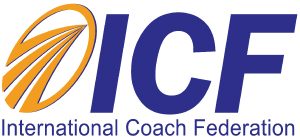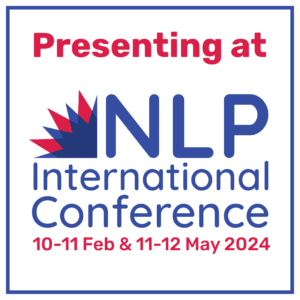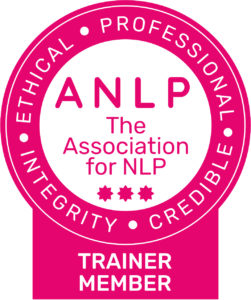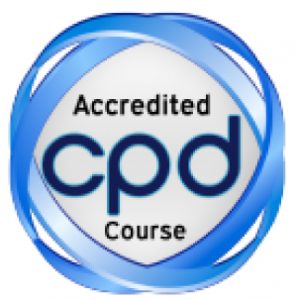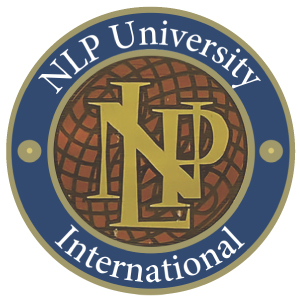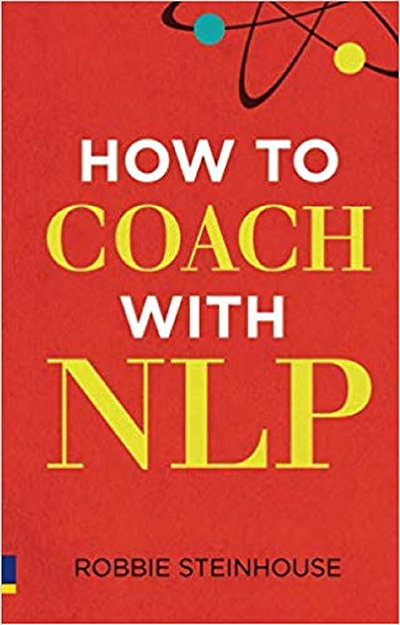Acuity, sensory. The ability to spot details in someone’s behaviour.
Anchor. A stimulus that automatically creates a new state.
Anchoring. The act of creating a ‘trigger’ stimulus for a state.
Archetypes. Energies and mental patterns that summon or speak for certain core ways of being in the world, for example love, humour, strength, gentleness.
Association. The state of being totally connected to, or experiencing, an event, mental or external. The opposite is dissociation (sometimes, disassociation), which is being an objective observer.
Auditory. To do with sound. See ‘Representational Systems’.
Beliefs. Statements we think are true but cannot (or have not bothered to) check. See ‘Logical Levels’.
Calibration. This word is used in two slightly different senses in NLP. a) Compiling a ‘dictionary’ of someone’s body language (“When B scratches her ear, that means she is upset”). While NLP accepts that some gestures have universal significance, it has also noted that people develop an array of actions and reactions whose meaning is particular to that individual. b) Using that dictionary to work out what state a client is in. Descriptions of NLP processes will often include the coach saying “I’m calibrating the client”, by which the coach usually means b) “I’m looking at the client and working out what they are really feeling or thinking.”
Chunking down. Moving to a lower level of categorization, for example from trees to oaks. Looking at something in greater detail.
Chunking up. Moving to a higher level of categorization, for example from trees to plants. Looking at the bigger picture.
Complex equivalence. Jumping to conclusions. Used in Meta Model.
Congruence. Wholeheartedness. When someone says they want to do something and they really mean it, they are congruent: their words, body language and voice tone all align.
Content (vs. process). NLP makes a distinction between content, which is what people say (“I was born in 1963. My family were pretty poor, but we were happy…”) and process, which is the way they say it – telltale signs from the client’s choice of specific words (= ‘language patterns’) and body language, about how they ‘tick’ at a deep level and whether they really believe what they are saying.
Contracting. The business of setting correct boundaries before a coaching session.
Critic. A state where we are on the lookout for flaws in an idea, not in a negative sense, but motivated by the desire to make the idea better. See ‘Disney process’ and ‘Spoiler’.
Default state. A mental and physical condition we naturally slip into when external pressures are removed. Exactly what this state is differs from individual to individual.
Deletion. Filtering incoming information by ignoring it.
Digital. A mode of inputting, coding and recalling information that doesn’t used the senses but words.
Disney process. A creativity process, modelled on Walt Disney by Robert Dilts. It involves working with three states: dreamer, realist and critic.
Dissociation (sometimes, disassociation). Being an objective observer of an event, mental or external. . The opposite is association.
Distortion. Changing incoming information in some way.
Dreamer. A creative, imaginative state. See ‘Disney process’.
Ecological. In NLP, this means ‘fitting in with relevant broader contexts’.
Eliciting, elicitation. a) Bringing about a state. b) Working out a strategy.
Embedded command. A hypnotic technique.
Feedback. Some kind of information about how you are getting on with a project (great or small).
First position. See ‘Perceptual positions’
Framing. Setting the context in which we experience something.
Generalization. Inferring general principles from recurring events. So if we see X at the bus stop every Tuesday, we generalize that he is always there at that time. Of course, one day he isn’t….
Gustatory. To do with taste. See ‘Representational Systems’.
Incongruence. Mixed feelings or showing these by speaking words that do not match body language.
Kinaesthetic. To do with feel, internal and external. See ‘Representational Systems’.
Leading. See ‘Pacing and leading’.
Logical Levels. A way of analysing the factors involved in human motivation – and limitation – into six very different aspects. We use this model a lot at NLP School.
Lost performative. An unsupported judgement (used in Meta Model).
Matching. Establishing rapport by copying someone else’s gestures or physical state in a subtle way.
Meta. The Greek word for ‘beyond’. In logical categorization, it means ‘at a higher level’, so oaks, ashes, beeches belong to the category ‘trees’, which in turn belongs to a meta-category, ‘plants’.
Meta Mirror. An NLP exercise using perceptual positions and spatial anchoring to deal with tricky relationships.
Meta Model. A tool for spotting and challenging certain types of limiting thinking. (Not, as one might think, a model that belongs to a higher logical category than other models. It’s just another model.)
Metaphor. Something standing for something else; an image. For example when reviewers say ‘the audience were glued to their seats’, they do not mean this literally. The glue stands for the state of rapt attentiveness that kept the audience seated.
Metaprogrammes. A set of deep-level patterns about how we experience and interpret the world.
Milton Model. A set of tools for creating trance.
Mind Reading. Not a stage act, but the everyday practice of guessing what other people think or want, and acting on those guesses, rather than asking them.
Mirroring. Establishing rapport by copying someone else’s gestures or physical state in a subtle way.
Mismatching. Acting, usually deliberately, in a way that is the opposite to another person’s behaviour.
Mission. The highest of the Logical Levels, our relation to the larger context in which we live (and our decision to contribute to that in a positive way).
Modelling. Understanding the Strategies and Logical Levels of someone who is excellent at something, and replicating them.
Olfactory. To do with smell. See ‘Representational Systems’.
Pacing and leading. Part of the skill in creating rapport lies in doing this slowly. ‘Pacing’ involves following the other person in some way, for example by matching and mirroring. Once rapport has been established, one can then begin to lead: getting the other person to follow you in some way.
Parts. Sub-personalities.
Perceptual Positions. Perspectives. The three main ones are first, our own; second, that of another person; and third, that of an objective ‘fly on the wall’.
Positive by-products. Hidden benefits of an apparently harmful behaviour. For example smokers get pleasure from being part of a ‘club’, a ‘persecuted minority’.
Positive intention. The positive, helpful motivation behind a behaviour. NLP believes that even the most harmful behaviours have, or once had, some positive intention.
Preference. A person’s most commonly used Representational System.
Presuppositions. NLP is loosely based on a number of presuppositions, statements about the world and about human psychology. However the term is a bad one, as they are not logically necessary for NLP, which is what ‘presupposition’ actually means! It helps if you believe most of the ‘presuppositions’, and if you don’t believe any of them, NLP is not for you. Our list of key presuppositions is given in the introduction to How to Coach with NLP.
Process (vs. content). NLP makes a distinction between content, which is what people say (“I was born in 1963. My family were pretty poor, but we were happy…”) and process, which is the way they say it – telltale signs from the client’s choice of specific words (= ‘language patterns’) and body language, about how they ‘tick’ at a deep level and whether they really believe what they are saying.
Rapport. A good, communicative relationship with another person. NLP teaches a number of tools for creating and maintaining this.
Realist. A state where we make clear plans and put them into action. See ‘Disney process’.
Reframing. Changing the context in which we experience something.
Rep System. See ‘Representational System’.
Representational Systems (Rep Systems). Senses. NLP stresses the similarities between the brain and a computer. Each sense is a representational system – a way of inputting, coding and recalling information. The five systems are visual, auditory, kinaesthetic (feel), olfactory (smell) and gustatory (taste). So someone with an ‘auditory rep system’ is someone sensitive to, and good at remembering, sounds.
Resources. A general term for ‘useful things’, especially positive feelings, memories and other states of mind.
Satir Categories. A way of categorizing how people react to stress. The five ways are blamer, placater, computer, distracter and leveller (the latter is the most helpful way: calmly dealing with the issues).
Script. Actually this isn’t an NLP term, but one from Transactional Analysis, but we use it a lot at NLP School. A script is a life-narrative, written and chosen when we are very young, which we then follow subconsciously as adults. As many of these scripts are overdramatic and dysfunctional, one of the jobs of therapy is to change these.
Second position. See ‘Perceptual positions’
Sensory acuity. The ability to spot details in someone’s behaviour.
Setting an intention. Before embarking on a course of action, one can consciously prepare to go about that action in a particular way.
Spatial anchoring. The association of a physical location to a specific mental state.
Spiral Dynamics. A model of developmental psychology and sociology alluded to a lot in NLP.
Spoiler. A negative critic.
State. Any condition of mind and body. In common speech, ‘being in a state’ means being overwrought, but in NLP a state can be anything from fury to calmness, from terror to quietly getting on with a task.
Strategy. A set way of doing something.
Submodalities. Ways in which experiences within a representational system can differ. For example a sound can be loud or soft, close or distant, deep or high (etc.)
Third position. See ‘Perceptual positions’
Timeline. A way of representing the passage of time in physical space.
Trance. A hypnotic state. Many trance states are mild – NLP believes we spend much of our time in light levels of trance.
Transactional Analysis (TA). This is not NLP, but a system of ideas often used alongside NLP. Developed by therapist Eric Berne, it is a set of models that pattern and explain human behaviour.
Universals. Overgeneralizing words like ‘always’, ‘never’ or ‘everybody’.
Unspecified Referential Index. A sentence with a missing or vague subject, such as ‘People say you shouldn’t do x’. (Used in Meta Model.)
VAKOG. The five (main) senses: visual, auditory, kinaesthetic, olfactory and gustatory.
Well Formed Outcome. A goal that is clearly outlined, stated positively, sensory-specific, timed, set in a context and ‘ecological’ (in the NLP sense, not ‘green’). Also, an NLP process that helps clients set such goals.
Well formedness. (of an outcome) The state of being well formed.




